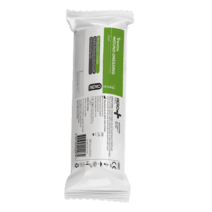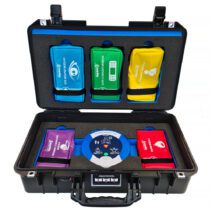News
Ten Second Triage – we’ve got you covered!
Published 12/01/2024

Triage is a fundamental principle in the effective management of major incidents and has traditionally been carried out through an assessment of a casualty’s physiology. However, recent experiences with major incidents have revealed that physiological triage may not be practically feasible, particularly in the early stages of an incident.
What does “triage” mean?
The term “triage” is derived from the French word “trier” which means “to sort” or “to separate”. In the context of medical or emergency situations, triage refers to the process of sorting and prioritising patients or casualties based on the severity of their injuries or medical conditions. The goal of triage is to efficiently allocate limited resources, such as medical personnel, equipment, and supplies, to maximise the number of lives saved. This involves categorising individuals into different priority levels to ensure that those with the most urgent needs receive prompt attention and care. Triage is commonly used in emergency medicine, disaster response, and military situations.
How is triage performed in Mass Casualty Situations?
A mass casualty incident refers to an event or a series of events that result in casualties on a scale surpassing the normal capacity of emergency and healthcare services to effectively manage. Such incidents may involve hundreds or even thousands of multiple casualties, presenting a range of injuries that go beyond the capabilities of standard major incident procedures.
Special measures are necessary to appropriately address the high number of casualties. Casualties are typically categorised into four groups;
- P1 (requiring immediate life-saving intervention)
- P2 (requiring intervention that can be delayed)
- P3 (classified as walking wounded or with minor injuries)
- DEAD (self-explanatory).
These incidents known as MCI’s or mass casualty incidents, are often triggered by sudden and significant events such as major RTC’s (road traffic collision), MTA’s (marauding terrorist attack), natural disasters, etc.
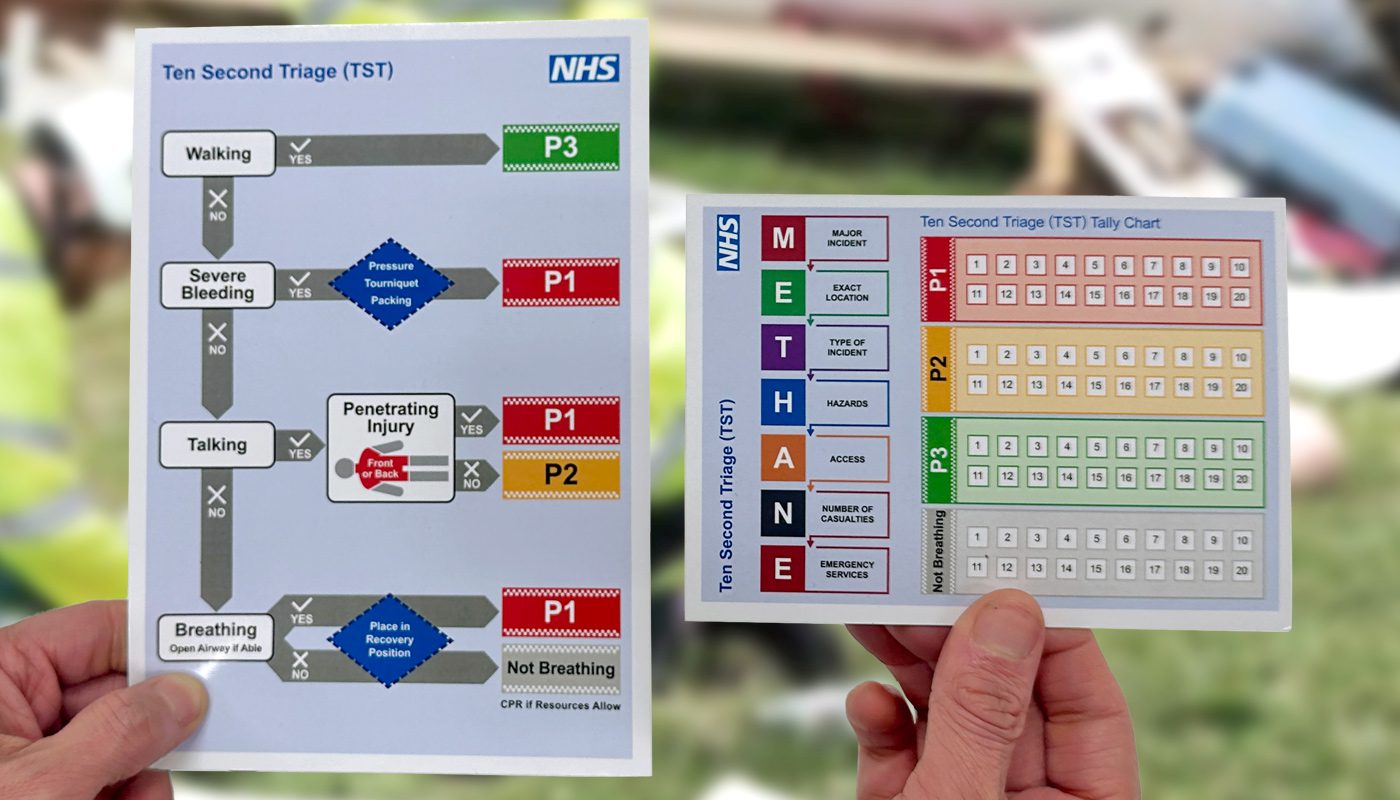
What exactly is the Ten Second Triage tool?
The Manchester Arena bombing underscored the importance of closing “the care gap” – the speed (and time) in which triage can be conducted and, subsequently, the pace at which the first effective interventions can be performed. The Ten Second Triage (TST) tool allows enables first responders, including security guards, first aiders, and fire and police personnel to initiate initial interventions simultaneously as part of the triage.
Addressing this concern was a priority in the review of major incident triage conducted by NHS England and led to the development of the MITT and TST tools. The TST, developed collaboratively by academics, clinicians, and responders from military, civilian, police, and healthcare sectors, has gained endorsement from NHS England and support from the NFCC and NPCC.
How does the TST system help to categorise triage casualties?
After a casualty has undergone triage assessment, it becomes crucial to communicate the assigned priority to subsequent first responders, ensuring that casualties are addressed in the order of urgency and minimising redundant efforts.
Typically, this communication is facilitated by affixing a label to the casualty and employing colour-coding to denote their priority such as the SmartTriage™ First Response system or slap bands. For optimal effectiveness, triage labels should be highly visible, adhere to standard categories, and securely fasten to the patient. Additionally, the label must allow for adjustments to the casualty’s priority as their condition evolves. Civilian patients are grouped into the following categories of decreasing treatment priority:
“P1” – Immediate (Red):
Requires immediate lifesaving treatment, exhibiting time-critical, life-threatening injuries.
“P2” – Urgent (Yellow):
Demands significant intervention at the earliest opportunity, indicating an inability to walk due to injury or illness.
“P3” – Delayed (Green):
Necessitates medical intervention without urgency, and the individual can independently walk to treatment.
“NOT BREATHING” – (Silver):
This is a change from the MITT tool that used the term “DEAD” as most First Responders are not qualified to complete a ROLE (Recognition of Life Extinct) and confirm a victim’s death. It also means that casualties in SCA can be labelled appropriately.
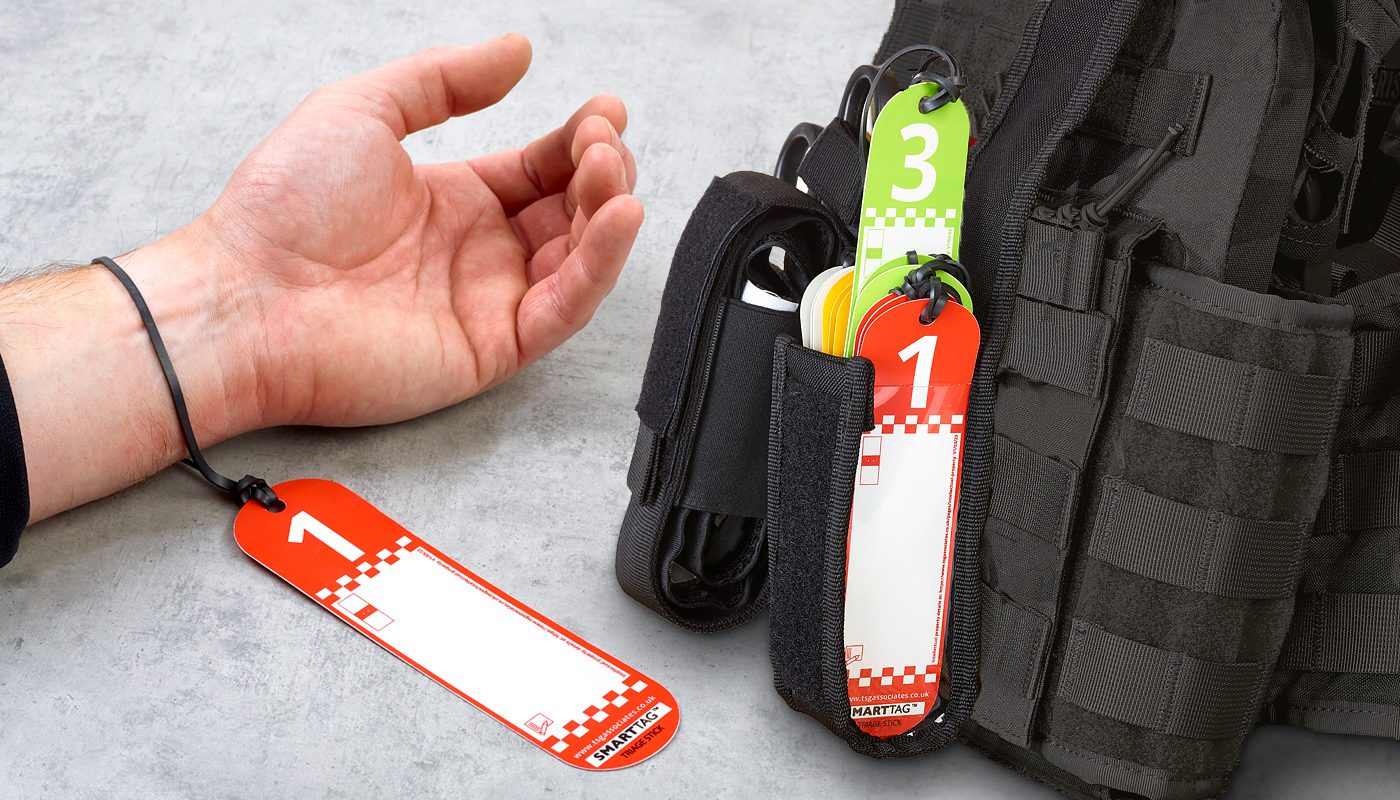
Why is the SmartTriage™ First Response system superior to slap bands?
To date, the SmartTriage™ First Response system has proven by far the most popular TST system due to its compact size (no larger than a Tourniquet), lightweight, ease of carriage (belt/MOLLE compatible), use (fits quickly over any size leg/arm), complete compatibility with the Triage system used by all NHS Trusts and virtually impossible to accidentally remove. It’s been specifically designed for its namesake. If you anticipate being a first responder to multiple casualties, this solution is essential.
This represents a method through which Aero Healthcare can play a role in bridging the care gap.
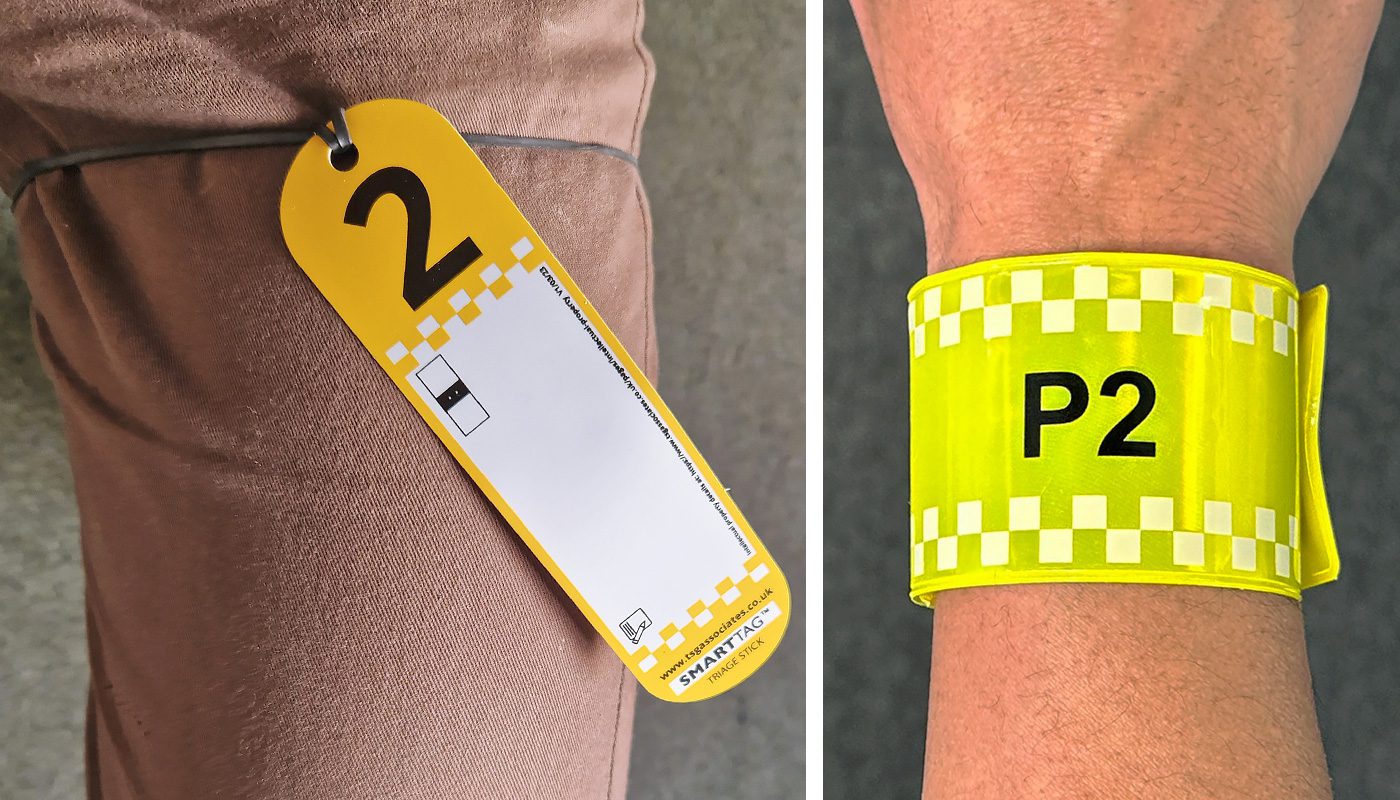
Why SmartTriage™ outperforms slap bands
In contrast to the SmartTriage™ First Response system, slap bands are bulky and relatively heavy; carrying 12+ of these is not at all convenient; there’s no allocated space to critically record TQ time, etc.; they are incompatible with the Ambulance Triage system; they’re not guaranteed to fit over any victim’s arm or leg securely, and disappointingly, they can detach all too easily.
Who is currently advocating the active use of the SmartTriage™ system?
The list below currently shows the NHS Ambulance Trusts who have chosen the SmartTriage™ First Response option. There are a further three that have confirmed they are going with the SmartTriage™ option with a further two yet to confirm. Out of the fourteen trusts, just four have chosen slap bands. This makes it likely that local Police and Fire Services associated with these trusts will follow suit.
• London Ambulance (LAS)
• Yorkshire Ambulance (YAS)
• Welsh Ambulance (WAS)
• West Midlands (WMAS)
• East of England (EEAST)
Need the SmartTriage™ First Response System for your organisation?
At Aero Healthcare, we already supply a range of products including NHS TST Aide-Mémoire cards that assist with mass casualty incidents to various emergency response services. Contact us today to find out more.
Get in touchShare this article

